Martian plans
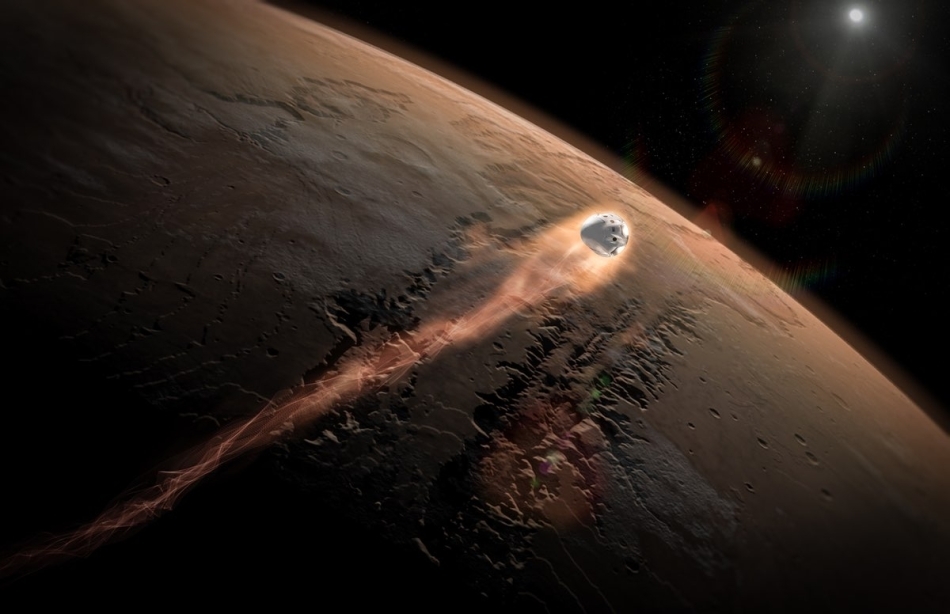
After the stories about the accidents and achievements of the Martian vehicles, it is logical to see which missions to Mars they want to carry out in the future. Moreover, now it’s not so easy to come up with scientific tasks for probes - six working orbiters and two rovers collect a huge amount of various information.
A bit of physics and astronomy
Theoretically, an interplanetary station can be sent to Mars at any time. But the fuel consumption for the flight to Mars will be very different. About every 26 months, Mars is in opposition - on the continuation of the Sun-Earth line:

')
Shortly before the confrontation, a “launch window” opens when the flight requires the least amount of fuel.

In principle, in great confrontations, when Mars comes closest, you can save a little more fuel, but now they don’t take advantage of this opportunity. For example, Curiosity was launched to Mars in 2012, when rapprochement with Earth was minimal.

The next Mars confrontations will be in 2018 and 2020, respectively, launch windows will open in late spring 2018 and summer 2020.
2018
The confrontation of 2018 will be great, so many missions were planned for it, from the second stage of Exomarss to such exotics as Dennis Tito’s manned fly-through mission of Inspiration Mars Dennis Tito (actually canceled, even the site does not open) or Mars One collecting money . But at the moment only two missions are planned for this year, and one is likely to be launched.
Insight
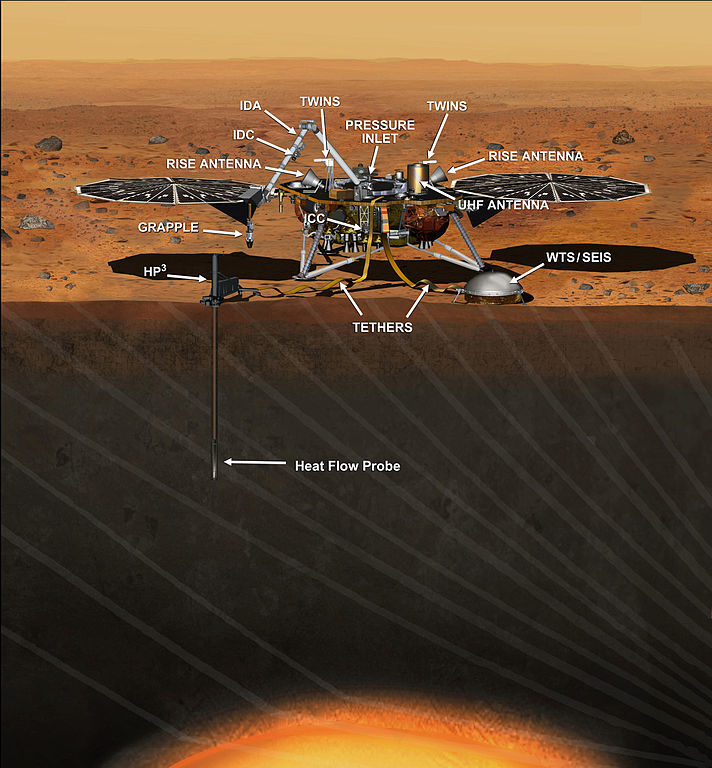
This probe would have to work on Mars, if it were not for the annoying technical problem. At the end of 2015, testing revealed that the main instrument of the SEIS probe did not hold a vacuum. The device was returned for revision and shifted launch for 2018.
InSight is a landing station based on the technology of the successful Phoenix probe. But if the Phoenix was landing in the polar regions and was looking for water ice, then the target would be the equatorial area. The landing site was chosen more for engineering reasons - the InSight solar cells will receive more light this way. And from a scientific point of view, the landing area is almost not important, because the main task of the probe will be the geology of the internal structure of Mars. After landing, the InSight will have to unload the hemisphere of the SEIS seismometer.

With the help of this aggregate, it will be possible to record "martsotroke" and other seismic activity, including the fall of meteorites and even tidal waves of Phobos. According to the data, we will be able to learn about the structure of Mars and its past.
The HP 3 tool will dig into Mars to a depth of 5 meters and tell us how much heat comes from the core of the planet. Temperature sensors are located with an interval of 10 cm, so we can get a temperature profile of the surface.
In addition, a magnetometer and a meteorological station are on the probe, and its radio transmitter will be used to very accurately determine the rotational speed of Mars. Is that with photos we are not lucky - the color camera does not fit in the timeline and budget, and the station will be only black and white.
But together with InSight, two cubic meters of 6U format will fly (6 cubes 10x10x11.35 cm). They will not carry any scientific workload and will fly past Mars, but at the most critical moment of landing InSight they will work as repeaters, transmitting probe telemetry to Earth.
Red dragon
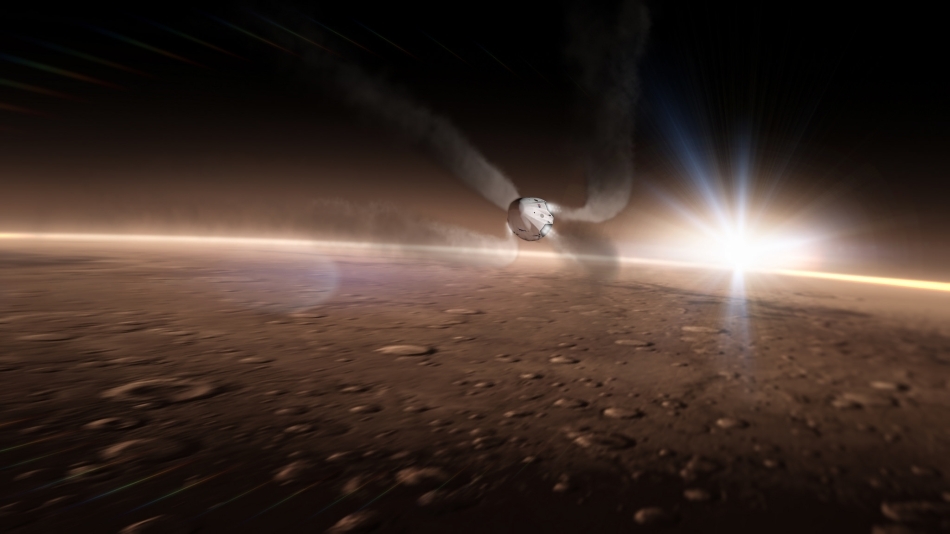
The launch of the Space Dragon Red Dragon probe ship is also scheduled for 2018. The modified Dragon ship will have to land exclusively on engines, without parachutes or air-absorbing bags, and carry out a rather large scientific program - searching for life, assessing the suitability of the planet for colonization, testing landing technologies, assessing local resources, and demonstrating the possibility of extracting water and producing rocket fuel . But the likelihood that SpaceX will be able to withstand the announced dates is extremely small - a little more than a year and a half is left before the launch window, and Dragon 2 has not yet flown even in a near-earth variant, the landing has not been fully tested on engines, there is no news about the development of scientific equipment Falcon Heavy media is also not yet tested.
2020
The number of Martian missions in 2020 is best transmitted by this comic cartoon.
In fact, NASA, ESA, Roscosmos, India, China, and even the United Arab Emirates are going to go there this year.
Mars 2020
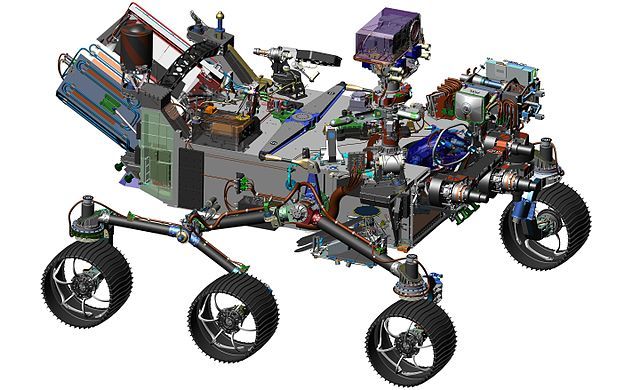
NASA is about to send Curiosity's advanced brother to Mars. On the improved operating experience of the chassis (forget about the holes in the rim of the wheels) will be installed other scientific devices:
MASTCAM-Z: An even more advanced camera system, with the possibility of panoramic and stereoscopic shooting, as well as zoom.
MEDA: A weather station will record temperature, pressure, humidity, wind direction and speed, as well as the size and shape of dust particles.
MOXIE: experimental technology will produce oxygen from carbon dioxide in the Martian atmosphere. Given that surface rovers have been working for years, this device can only be jokingly called the first terraformer of Mars.
PIXL: X-ray spectrometer will even better see the various chemicals on the surface.
RIMFAX: A radar that can see at meters below the surface.
SHERLOC: Ultraviolet spectrometer with a laser to determine the surface structure and search for organic matter.
SuperCam: Another camera for mineralogical analysis and the search for organic matter at a distance.
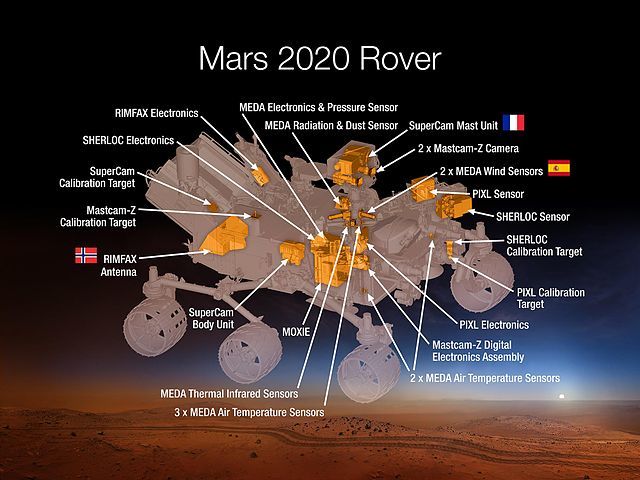
In addition, the project wanted to include a small solar-powered helicopter, but it was not included in the official list of equipment, so it will almost certainly not be there. But in the official infographics there is an opportunity to drill samples and store them, as well as microphones promise us to listen to the sounds of Mars.
"Exomars"
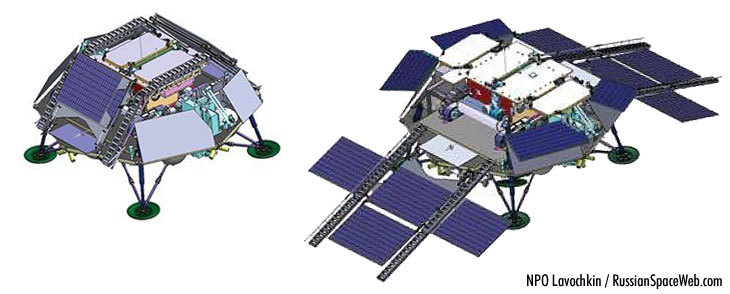
The rover and the landing platform will be part of the second phase of the European-Russian mission Exomarss.
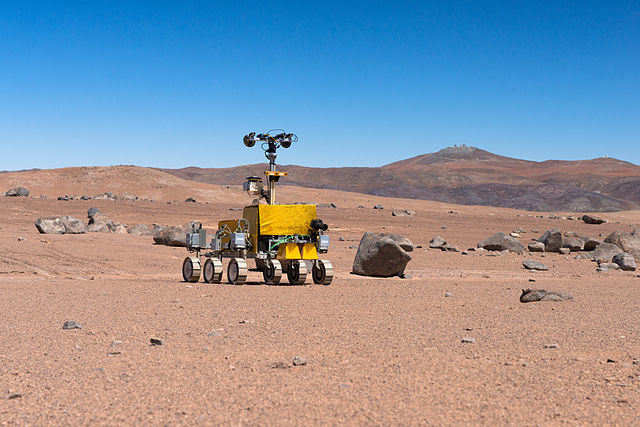
The main feature while the nameless rover will be a drilling rig that can drill up to two meters of surface and pull out a 1x3 cm sample for analysis.

Drilling rig
In addition, the rover will be a diverse set of tools:
PanCam: Panoramic Camera
ISEM: Infrared Spectrometer.
CLUPI: A special camera for macro photography of interesting areas at close range with high resolution.
WISDOM: Radar for analyzing water and other things below the surface.
Adron: A device for finding water and hydrates.
Ma_MISS: Multispectral analyzer located inside the rig.
MicrOmega: The spectrometer in the visible and infrared ranges will be used to analyze surface minerals.
RLS: Another spectrometer will look for organics.
MOMA: A tool to search for biomarkers and life.
The landing platform after the landing of the rover will not stop its work, but will become a long-lived weather station, an atmosphere analyzer and a seismometer.
Chinese mission
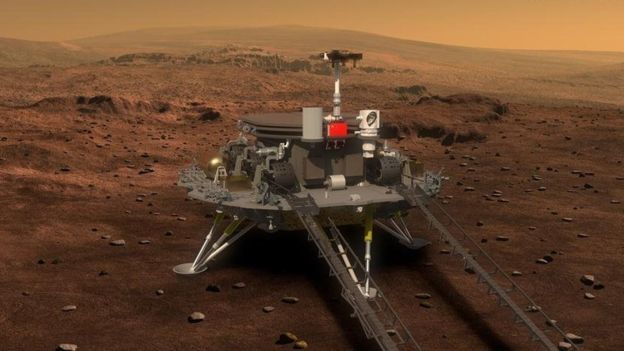
The Chinese mission to Mars is also expected in 2020. It will include both the orbiter and the rover. According to the renderers, the rover will be solar-powered, and, like the previous two, will also be equipped with a radar to explore what is under the surface. In addition, the mission aims to study the climate, the ionosphere, the distribution of water and ice, the internal structure and topography of Mars.
Indian mission
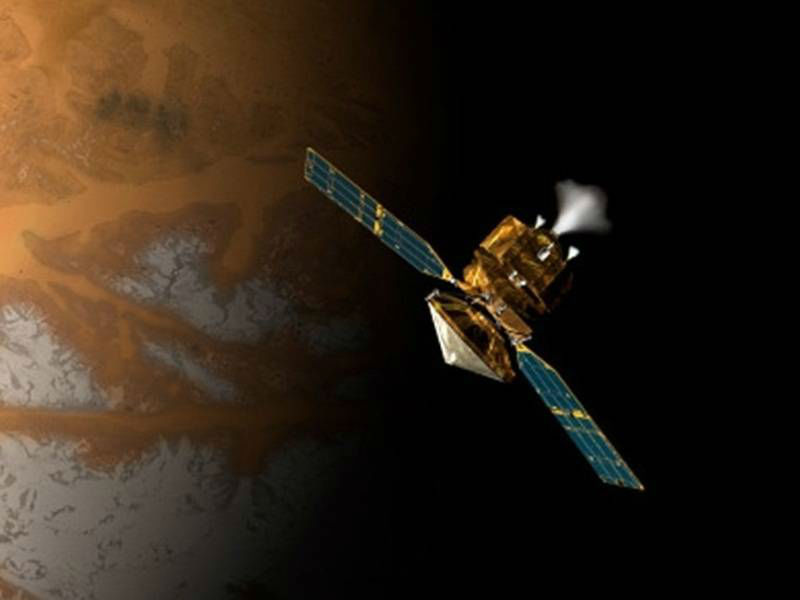
Little is known about her. As expected, it will be an orbiter, possibly with a rover. The latest news on this project is a message on cooperation between Indian (ISRO) and French (CNES) space agencies.
UAE
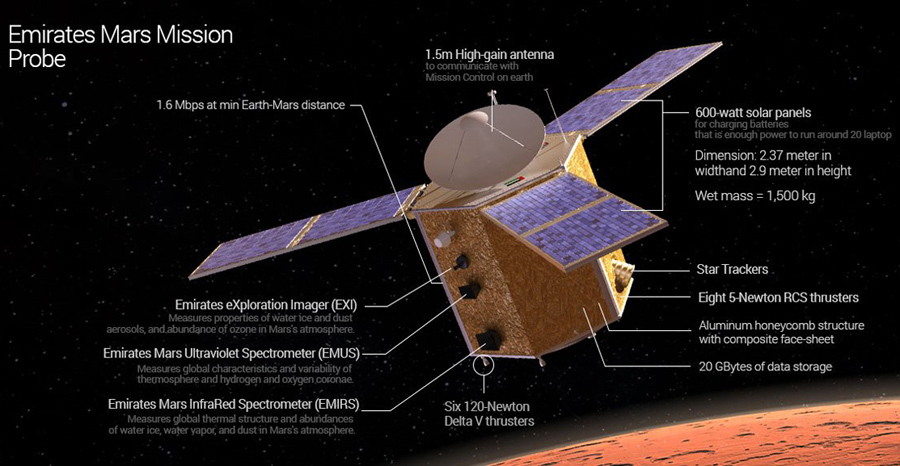
The big news not so long ago was the official announcement that the United Arab Emirates is about to launch a Martian probe. It will be an orbiter with a relatively small number of scientific instruments - a camera and two spectrometers - infrared and ultraviolet. However, for a country like the UAE this will be a huge leap forward. According to the latest news, the work on the device is being actively pursued; in early November, the development team was visited by the Vice President and the UAE Prime Minister Sheikh Mohammed.
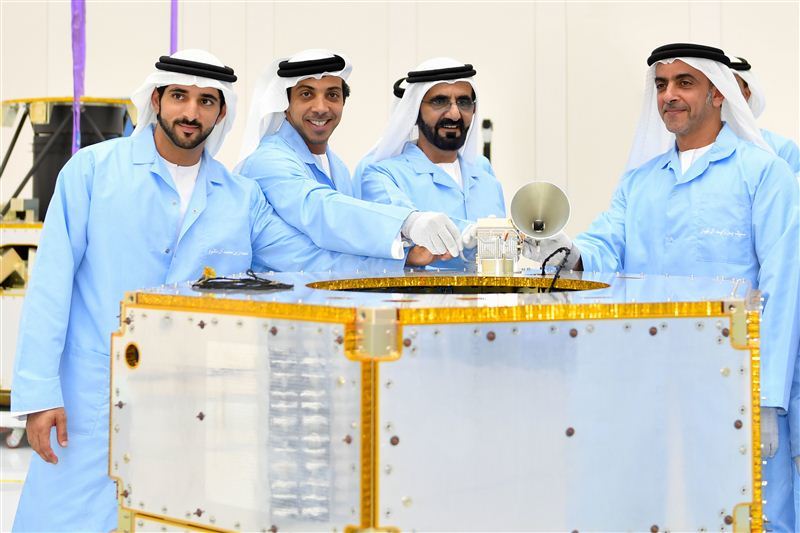
Conclusion
In the longer term, there are other missions, for example, the second attempt to bring samples from Phobos (Phobos-Grunt 2, also known as Boomerang), or the mission to return samples from Mars. But they are scheduled for at least 2024. This means that there is little information about them, and what is known may change several times. Judging by the number of operating vehicles, then Mars is the most interesting object of the Solar System, and the planned missions only confirm its status.
Source: https://habr.com/ru/post/399219/
All Articles